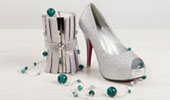Name an item of design interest, and you’ll probably find it discussed inside. About Face by Alan Cooper, a pioneer in the user experience design field and the person who introduced concepts like persona that we use daily today is nothing short of its author. Refactoring UI will teach you how to design beautiful user interfaces by yourself using specific tactics explained from a developer’s point-of-view.
We particularly love how this book includes plenty of visual examples and guidelines. If you can turn studying great user-centered design and improving your UI design skills into a daily habit, the compounding effect over just a year will put you decades ahead of your peers. In a competitive industry, consistently pushing out great user interface design is the easiest way to stand out. This piece serves as an evergreen resource designed to support your continuous growth in UX and UI design. As trends evolve and the best books to learn UI UX design change, we’ll be updating the content to ensure it remains relevant and valuable for your learning journey.
Simple and Usable: Web, Mobile, and Interaction Design by Giles Colborne
UXmatters’ blog covers a little bit of everything UX, from advice on best practices to loftier thought pieces. You’ll find tips for everyone, from those just starting out to advanced designers, making this an excellent blog to bookmark throughout your career. In this podcast from Users Know, listen to Kate Rutter and Laura Klein discuss UX, tech, and cocktails—each episode features a drink pairing.
- All my experts named the book that brightens their career path with its vivid vision, its practical tips, or its fire gags.
- Every manager and entrepreneur interacts with User Experience, sometimes even without realizing it.
- After all, how will you know what your users will need if you don’t spend time discovering how they interact with products?
- I hope you’ve found a book that will help you develop the exact skills you want or inspire you to create amazing designs.
Such deep integration is a process of careful design and iterative learning, especially for technology companies. The book was used by programmers to see and plan the look of the interface in order to delineate the hierarchy of elements on the page. Today, the wireframing is used by professional designers to plan the best user experience for the end users. How many times per day do you reach for your phone to open X (Twitter), Instagram, or any another app for that matter? Chances are you’re often doing this subconsciously — this is the power of habit-forming products, and it’s a powerful and scary development in the world of user experience design.
What is a Design System? (2024 guide)
You can’t play your string section well without understanding how it cooperates with all the other people and processes inside of the product team. Since user needs and desires are malleable, products need to adapt continuously. This book provides a great approach to prioritizing your users in a sensible fashion. If you’ve been working at a modern product company, you won’t find this book ground-breaking.
Then the authors move onto real-life situations, strategizing in a project environment and best practices on other aspects of writing for UX. UX being directly linked to the internet and contemporary trends, it is even more important for a UX designer to keep reading even in the later years of their ui ux design books career. The good thing about the book is, it really does speak to a UX designer who has never done usability testing before as well as to the experts looking to do leaner testing. Just like a developer has to look up pieces of code, a UX designer needs something to refer to from time to time.
Our open-source books
Adam Wathan & Steve Schoger are very active on Twitter and within the design/dev community and Refactoring UI is a digital product success story in itself. You can access this 300+ page ebook for $64.90 or share with your entire design team for $284.90. Practical UI offer a 28-page free preview, and you can buy the entire 282-page book for $99. Adham is also active on X (Twitter) where he shares UI design tutorials and tips.
Designing with the Mind in Mind is a guide to user interface design based on the science of human perception and memory. The approach is thoroughly practical and avoids getting bogged down in neuroscience itself. Heaths’ framework will help you as a designer to focus on the highest-impact ideas and to better communicate with your target audience. Donald Miller’s StoryBrand process is a proven solution to the struggle business leaders face when talking about their businesses. Published in 2014, it remains one of the most iconic UI UX books to this day and offers excellent tips on typography, visual design, and how to create visual hierarchy. The Non-Designer’s Design Book has taught hundreds of thousands of people how to make their designs look professional using four surprisingly simple design principles.
Lean UX: Applying Lean Principles to Improve User Experience by Jeff Gothelf with Josh Seiden
Despite the anecdotes, I’m inclined to consider this a reference book, an introduction to user interviews. You’ll find it redundant and boring if you’re a seasoned UX researcher. However, if you’re a designer who has to do interviews, this book is a one-stop and memorable resource. The book has many autobiographical elements and plenty of laugh-out-loud moments. Weinschenk opens each chapter with a story demonstrating the topic and cites numerous studies. This reassured me that I’m consuming serious information and not just the musings of a random designer.
Inspired is the perfect book to shed light on how everything works. Ilya, our CEO at Eleken design agency, strongly recommends reading this book to all of us (especially the marketing department). The next one on our list of UX books started as an email newsletter, grew into a blog, and became viral.
Hooked: How to Build Habit-Forming Products
This book gives you the tools to avoid usability pitfalls and create better products. It lays out exactly which methods to use at each stage of development, so you’re never flying blind. Plus, it’s packed with detailed guidance on running usability tests and navigating the tricky world of international usability.
Victor is well-known for sharing useful and practical design tips on X (Twitter) and has wrapped up his knowledge into a 108-page book. 100 UI/UX Tips & Tricks is short and to the point, with illustrative examples that act as mini case studies, as well as more than 60 additional external sources. Universal Principles of Design was first published in 2003 by William Lidwell, Kritina Holden, and Jill Butler, making it one of the oldest books on this list.
Get Weekly Design Tips
You worked hard to digitize your ideas and send them our way in the form of light and sound. But they must be encoded in neural impulses for your app to work and your business model to succeed. In a world where we are constantly surrounded by screens and interfaces, there has to be a way to co-exist better with technology. Krishna’s criticism that often gets to be funny and relatable touches upon precisely that.





